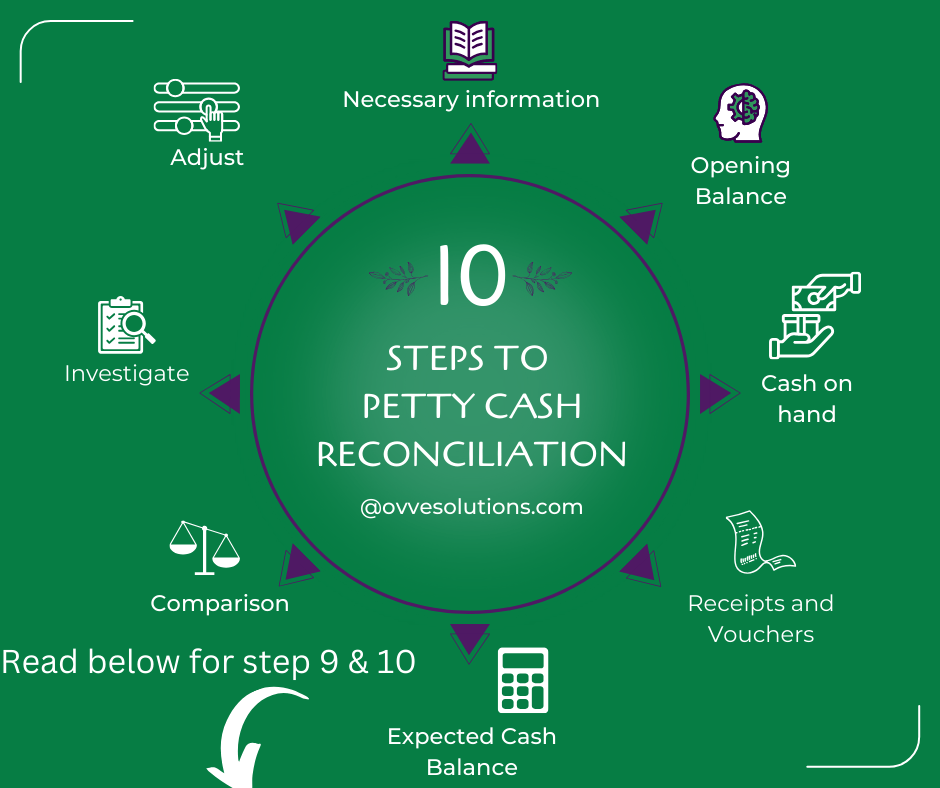
Here is the Step-by-Step Guide to Petty Cash Reconciliation
1. Gather Necessary Materials
– Petty Cash Log: The record of all petty cash transactions.
– Petty Cash Vouchers: Receipts and vouchers for each expenditure.
– Cash on Hand: The physical cash remaining in the petty cash box.
2. Verify the Opening Balance
– Confirm that the opening balance for the petty cash fund is accurate according to the previous reconciliation.
3. Count Cash on Hand
– Physically count the cash remaining in the petty cash box.
4. Summarize Receipts and Vouchers
– Collect all receipts and vouchers for petty cash expenditures since the last reconciliation.
– List and total all expenses documented by these receipts and vouchers.
5. Calculate Expected Cash Balance
– Formula: Starting Balance – Total Expenses = Expected Cash Balance.
– Ensure the starting balance matches the last reconciled petty cash balance.
6. Compare Cash on Hand to Expected Balance
– Check if the physical cash on hand matches the expected cash balance calculated.
7. Identify and Investigate Discrepancies
– Discrepancies: Note any differences between the expected balance and the actual cash on hand.
– Investigation: Investigate any discrepancies by reviewing receipts, vouchers, and the petty cash log.
8. Adjust the Records
– Correct Errors: Make necessary adjustments to the petty cash log for any errors found.
– Update Log: Ensure all transactions are recorded accurately in the petty cash log.
9. Replenish Petty Cash
– If the petty cash is running low, prepare a request to replenish the fund to its original balance.
– Record the replenishment in the petty cash log.
10. Document the Reconciliation
– Reconciliation Statement: Prepare a reconciliation statement that includes the starting balance, total expenses, actual cash on hand, and any discrepancies.
– Approval: Have the reconciliation reviewed and approved by a supervisor or manager.
Tips for Effective Petty Cash Management
– Regular Reconciliation: Perform petty cash reconciliation regularly, such as weekly or monthly, depending on the usage.
– Secure Storage: Keep petty cash in a secure, locked location.
– Detailed Records: Maintain detailed records of all transactions, including dated receipts and vouchers.
– Clear Policies: Establish and communicate clear policies for petty cash usage and documentation.
– Training: Ensure employees handling petty cash are trained in proper procedures and documentation.
